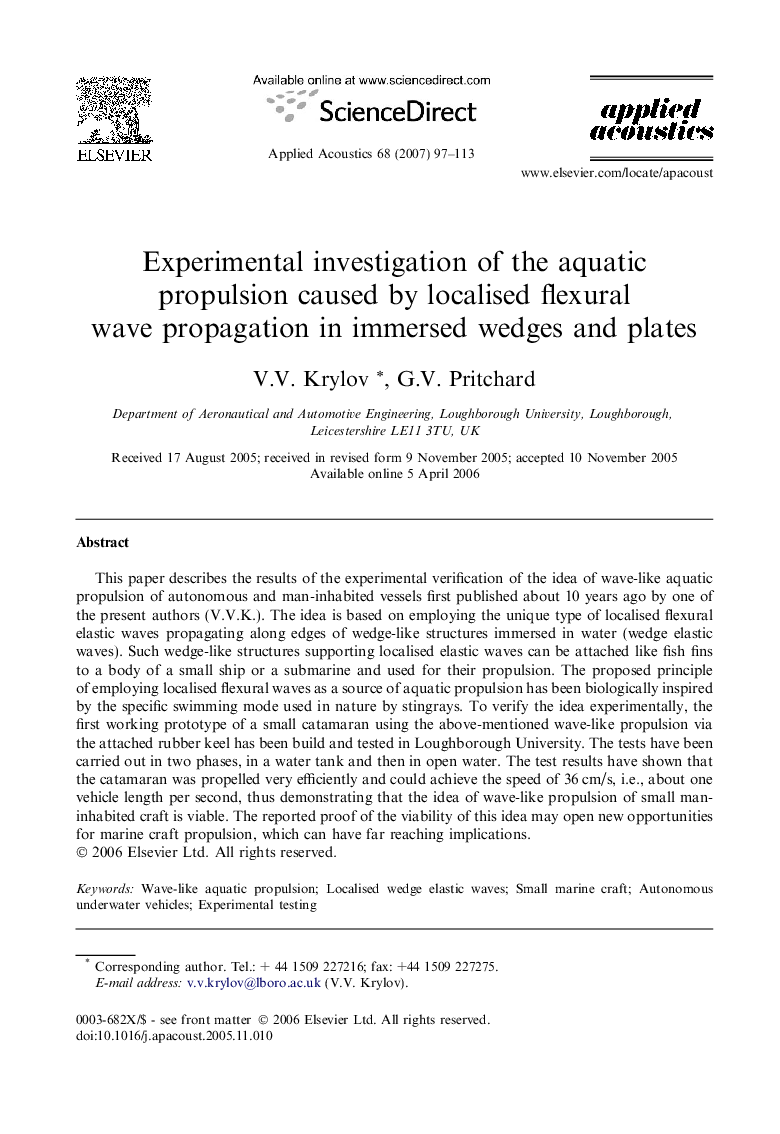| Article ID | Journal | Published Year | Pages | File Type |
|---|---|---|---|---|
| 755114 | Applied Acoustics | 2007 | 17 Pages |
This paper describes the results of the experimental verification of the idea of wave-like aquatic propulsion of autonomous and man-inhabited vessels first published about 10 years ago by one of the present authors (V.V.K.). The idea is based on employing the unique type of localised flexural elastic waves propagating along edges of wedge-like structures immersed in water (wedge elastic waves). Such wedge-like structures supporting localised elastic waves can be attached like fish fins to a body of a small ship or a submarine and used for their propulsion. The proposed principle of employing localised flexural waves as a source of aquatic propulsion has been biologically inspired by the specific swimming mode used in nature by stingrays. To verify the idea experimentally, the first working prototype of a small catamaran using the above-mentioned wave-like propulsion via the attached rubber keel has been build and tested in Loughborough University. The tests have been carried out in two phases, in a water tank and then in open water. The test results have shown that the catamaran was propelled very efficiently and could achieve the speed of 36 cm/s, i.e., about one vehicle length per second, thus demonstrating that the idea of wave-like propulsion of small man-inhabited craft is viable. The reported proof of the viability of this idea may open new opportunities for marine craft propulsion, which can have far reaching implications.
